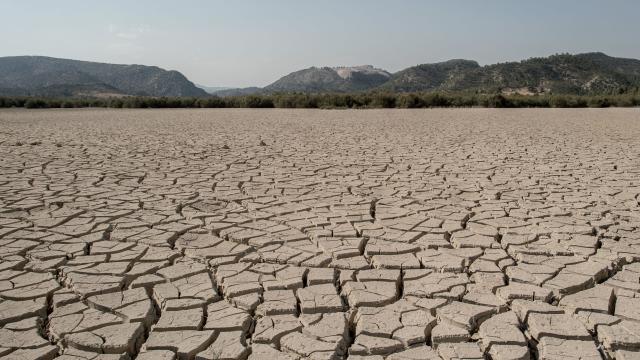The Earth is saving our asses right now by sucking up a large hunk of humanity’s carbon pollution. But we may not be so lucky for much longer.
A new study in Science Advances on Wednesday warns that turning up the planetary heat is weakening the biosphere’s ability to protect us. More worrisome still, it may turn into a source of carbon dioxide, creating a dangerous feedback loop that speeds up warming in the coming decades.
Without plants to suck up carbon dioxide, the planet would be suffocatingly hot. Plants take carbon dioxide from natural and unnatural sources and sequester it away in the soil. The amount of sunlight, temperature, and other factors can influence their ability to do just that. Of those, temperature is the one that’s getting most out of whack, and it could eventually stunt plants’ ability to photosynthesise.
[referenced id=”1663494″ url=”https://gizmodo.com.au/2021/01/12-new-studies-show-how-close-insects-are-to-extinction/” thumb=”https://gizmodo.com.au/wp-content/uploads/2021/01/11/y1esh07uwc2tpyrwocpr-300×169.jpg” title=”12 New Studies Show How Close Insects Are to Extinction” excerpt=”I do not like bugs. Creepy, many-legged things make my skin crawl. But as unpleasant as they are, insects are absolutely crucial for our world’s ecosystems to function, and sadly, new research shows that the creatures populations are on the verge of collapse.”]
Researchers gathered data from a monitoring network that spans the globe that looks at plants’ rates of photosynthesis and respiration, the processes that allow them to absorb carbon dioxide and use it to grow. They also gathered temperature data to see how that affected those two processes, including the maximum temperature for everything to work in harmony. The findings show that temperatures of 18 degrees Celsius is the maximum temperature for what are dubbed “C3 plants,” which include the likes of wheat, rye, oats, and other plants more abundant in cooler high latitudes and 28 degrees Celsius for more tropical plants and crops like maize and sugarcane. Respiration rates keep on increasing up to 38 degrees Celsius. That creates a misalignment, though; as plants begin to photosynthesize less, they release more carbon dioxide.
“The most important carbon sinks in the biosphere exist because plant photosynthesis exceeds respiratory losses of carbon back to the atmosphere,” Merritt Turetsky, a biogeochemistry expert who focuses on the Arctic at the University of Colorado and wasn’t involved in the study, said in an email. “This study of the strength of the terrestrial land sink suggests that the balance between carbon being taken up and lost from our ecosystems is close to a tipping point due to rising temperature and its effect on biological processes.”
The results show that the most important ecosystems for carbon sequestration also happen to be most at risk of facing warming that pushes them into that state. Currently, less than 10% of the biosphere deals with temperatures above the decoupling level, but by century’s end, up to 70% of the most important carbon sinks from the Amazon to the boreal forest could be above that threshold for six months or more.
That assumes pursuing no cuts in carbon pollution, which seems unlikely (though never say never). But even with cuts, we could still see land start to absorb less carbon dioxide since warming doesn’t just stop when emissions drop. Rather, it’s a decades-long process. The research warns we could start passing the tipping point for the land to start emitting carbon in the next two or possibly three decades.
“This is in keeping with our field knowledge and on-the-ground observations,” Turetsky said. “Northern ecosystems — despite being in areas typically associated with cold conditions — are very sensitive to climate warming and we are already seeing this play out in terms of vegetation change, carbon losses, permafrost thaw, and drought.”
The 2019 Arctic Report Card found that parts of the permafrost were emitting carbon dioxide. And just this past summer, the Arctic and large parts of sub-Arctic Siberia experienced unprecedented heat, including a 100-degree-Fahrenheit (38-degree-Celsius) heatwave that caused massive fires to spread, tundra to explode, and a record amount of carbon dioxide from biomass getting dumped in the atmosphere. Tropical forests are also starting to emit carbon dioxide, and widespread human-ignited fires and deforestation are adding further pressure on that ecosystem on top of warming.
That type of human pressure needs to be wound down very quickly. But so does the carbon pollution cranking up the heat. The new study warns that failing to meet the Paris Agreement could “quantitative alter” the ability of land to sequester carbon, which is a very scientific way of saying the world needs to get its act together ASAP.
